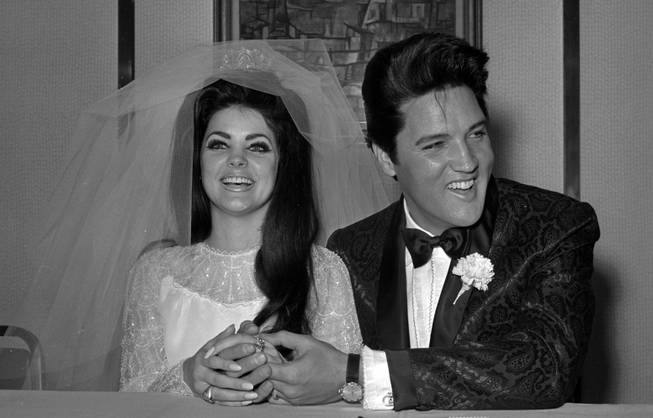
Las Vegas News Bureau
Priscilla and Elvis Presley at their wedding at the Aladdin in Las Vegas.
Sunday, Feb. 14, 2010 | 2 a.m.
Related story
Viva Elvis Preview
Cirque du Soleil brings Elvis back to the Strip with "Viva ELVIS" at Aria in CityCenter.
Las Vegas love affairs are notoriously short-lived, making the one that is in its 47th year all the more special.
It started with an initial rejection, but the young, determined suitor didn’t give up. He kept trying to impress in ever bigger and better ways. After he made a movie about us — built around what would wind up being “our song” — we fell hard for each other. It was sealed with a hotel suite ceremony, and we wound up making a lot of money together.
We grew apart later, when his drug addiction came between us. But still we couldn’t let go. And with the passing of time, we memorialize more what we once had.
The latest symbol of Las Vegas’ love affair with Elvis is “Viva Elvis,” the Cirque du Soleil production at the Aria’s Elvis Theater.
Indeed, for all the Elvis slot machines and all the Flying Elvi and all those Elvis impersonators, we still can’t seem to get enough.
The courtship began awkwardly, as so many do — a hip-gyrating 21-year-old rock ’n’ roll singer trying to woo a much older, reserved audience that favored polished crooners and big band jazz.
Elvis, billed as the “Atomic Powered Singer,” was panned in his Las Vegas premier in April 1956, opening in the New Frontier’s Venus Room for comedian Shecky Greene and the Freddy Martin orchestra. He mustered only polite applause. At a Saturday matinee, on the other hand, teens screamed with delight. Although the concert proceeds financed lights for a baseball park — the first of many gifts he gave the city — Las Vegas preferred suitors who appealed to big spenders. Teens couldn’t gamble.
“For the teenagers, the long, tall Memphis lad is a whiz; for the average Vegas spender or showgoer, a bore,” Las Vegas Sun reviewer Bill Willard wrote at the time. “His musical sound with a combo of three is uncouth, matching to a great extent the lyric content of his nonsensical songs.”
Greene remembers the Elvis of those first shows as a nice, lovable kid who simply wasn’t in his element with the dressed-up nightclub crowd.
Wearing “a baseball jacket,” Presley looked like he had just wandered in “from the parking lot,” Greene recalls. Greene told Presley’s manager, Col. Tom Parker, that Elvis needed to dress to impress Las Vegas.
Greene even made fun of his opening act, drawing loud laughter from the audience. Presley laughed along with them.
But not everyone who saw the show thought Elvis was joke fodder.
“Bing Crosby was in the audience, and he told me Elvis would be the biggest star in show business,” Greene says. “Evidently, he saw something I didn’t see.”
And although Las Vegas didn’t see much in him yet either, Elvis reaped substantial benefits from that first date. During breaks, he and his band caught another Strip lounge act, Freddie Bell and the Bellboys, who performed the song “Hound Dog.” Within weeks of leaving town Elvis had incorporated the song into his own live act and it became one of his biggest hits.
Although not known as a gambler, he enjoyed the city’s night life, and he befriended Liberace and other big-name entertainers while developing relations with casino executives such as Milton Prell, who owned the Sahara and Aladdin. They would make him feel at home during his frequent trips to Las Vegas.
Former Army buddy Joe Esposito, who was Presley’s road manager for 17 years and is a retired Wynn Las Vegas casino host, says Presley and his posse would stay up all night and hit the shows, often going backstage. And they were constantly surrounded by showgirls.
Las Vegas Hilton turns 40
John Katsilometes interviews long-time Hilton employees about their experiences with Elvis for the hotel's 40th anniversary on July 2, 2009.
“He enjoyed Vegas tremendously because this was the only town you could do 24 hours a day,” Esposito says. “But he was always concerned about whether Vegas would ever like him.”
It wasn’t until the 1963 filming of “Viva Las Vegas” that the entire city began to fully embrace Elvis. The cast and crew were everywhere — the UNLV gymnasium, the Flamingo swimming pool, the Tropicana skeet range.
“The big turnaround for Elvis in Vegas started with ‘Viva Las Vegas’ because tourism increased tremendously after he made the movie,” Esposito says. “He felt good because he was respected.”
The film was capped off by the title song, in which Presley serenaded the “bright light city gonna set my soul, gonna set my soul on fire.”
His link with the city was cemented when he exchanged wedding rings with Priscilla Ann Beaulieu in Prell’s suite at the Aladdin in May 1967.
“They chose Vegas because it was an easy place to get married quick,” says Esposito, who served as best man. “It was discreet.”
After the Elvis-Priscilla honeymoon came his much longer honeymoon with Las Vegas — a historic seven-year run at the International-turned-Las Vegas Hilton from 1969 to 1976. The shows revived Presley’s career as a live performer while injecting new life into a city that had been searching for the next great act after the breakup of the Rat Pack.
Elvis was more than ready to appear before a live audience in Las Vegas for the first time in 13 years, even if he didn’t realize it at the time.
“He was very excited that people came out to see him but he was a nervous wreck when he first walked onstage,” Esposito says. “He had been so concerned about being accepted again, and he had tears in his eyes when he was accepted.”
International owner Kirk Kerkorian inked the deal with an initial $100,000-a-week contract, and Presley’s image was plastered on billboards and bus placards all over town. Elvis, wearing his trademark jumpsuits, sold out 837 consecutive shows over the seven years after opening in July 1969. Performing two shows a night for two months each year, he sold more than $164 million worth of tickets in today’s dollars to 2.5 million fans, engraving rock ’n’ roll into the city’s landscape and proving that a casino showroom could make money.
Elvis gave back to local charities, allowing them to share in the proceeds of souvenirs that were sold in the hotel lobby.
This transformation, from unappreciated Las Vegas performer in 1956 to beloved superstar, had everything to do with the fact that Elvis had become about the same age as his audience and had developed a persona befitting a showroom, College of Southern Nevada history professor Michael Green says.
“When he came back in ’69 he came back with glitz, and that’s what Las Vegas entertainment is all about,” Green says. “He was also in his 30s by the time he came back to the International and much closer to the age group of the people who came to see his show.”
Presley’s affair with the city began to sour a little toward the end, even as fans continued to jam the 2,000-seat theater. Rumors began circulating about his increasing reliance on painkillers, amphetamines and other drugs. In his penthouse suite, he had whipped out a handgun and shot at the television and the chandelier.
His rapid weight gain became noticeable. He looked tired and the quality of his stage performances began slipping. He canceled some of his Hilton engagements because of health issues.
On Aug. 16, 1977, barely eight months after Elvis left the Hilton building for good, he died at his Graceland mansion in Memphis, Tenn. He was only 42.
About 150 mourners gathered outside a Las Vegas mortuary to pay their respects at a service that featured Presley’s music played through large speakers. One fan complained that she could find no expressions of sorrow from Strip hotels.
But when the city adopted its “What happens in Vegas” mantra, Las Vegas again embraced Elvis.
“He is a good way to reach back to the old days to someone who was naughty in his youth, to someone they couldn’t show from the hips down on TV,” Green says. “It fits in with Vegas being naughty.”
•••
The tourists who want to share in Las Vegas love affair with Elvis usually make several stops around town.
A visit to the eight-home street of Elvis Presley Court doesn’t usually rank high on the list. He never lived there. But Elvis has a star on the Strip’s Las Vegas Walk of Stars, made possible through a $15,000 contribution from the Viva Las Vegas! Elvis Presley Fan Club.
Fans may lament the closing of the Elvis-O-Rama museum a few years ago, but the Imperial Palace has the King’s Ransom Museum, featuring his jewelry, stage and film wardrobe and his 1977 Lincoln Continental. Elvis in black leather lives in wax at Madame Tussauds at the Venetian.
The Mecca, though, is the Las Vegas Hilton, where guests are greeted by a life-size bronze statue of The King. The hotel is planning an Elvis fan festival for July.
“It has been a steady flow of people who want to see where Elvis performed,” Hilton marketing and entertainment boss Rick White explains. “They want to look at the stage, and they come in all age groups.”
And then there are the Elvis knock-offs, performing at the “Legends in Concert” show at Harrah’s Las Vegas, the “American Superstars” at the Stratosphere or as Big Elvis at Bill’s Gamblin’ Hall & Saloon.
Elvis impersonators are so ubiquitous that they have come to symbolize Las Vegas.
The Las Vegas Convention and Visitors Authority, which promotes the city’s tourism business globally, used Elvis impersonators as ambassadors at trade shows and other events more than 40 times over the past two years.
“We’re the entertainment capital of the world and he’s an iconic figure whose brand has been sustained,” authority spokesman Vince Alberta says.
And impersonators are mainstays at Las Vegas wedding chapels, performing their renditions of “Love Me Tender,” “Can’t Help Falling in Love,” “I Want You, I Need You, I Love You” and other romantic Presley tunes.
“Elvis made it hip to get married in Las Vegas,” says Brian Mills, a Presley impersonator and manager of the Viva Las Vegas Wedding Chapel.
The owner of A Little White Wedding Chapel, Charolette Richards, says her ties to Elvis go back to her preparation of the flower arrangements for Presley’s wedding. Her chapel has been conducting Elvis-themed weddings since the early 1970s. Richards estimates she has hired more than 100 Elvis impersonators over the years.
One of them gave the full Elvis treatment recently at the wedding of Neil Cawkwell and Lynn Hassell. After the ceremony, the three of them rode down the Strip in a pink Cadillac DeVille convertible.
“Elvis-Vegas, it works,” Cawkwell says. “Elvis took Vegas into his heart, and Vegas has really taken Elvis into its heart.”
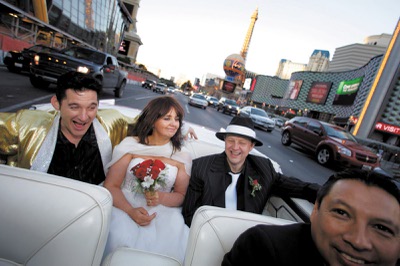
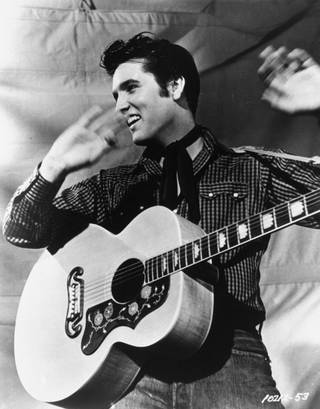
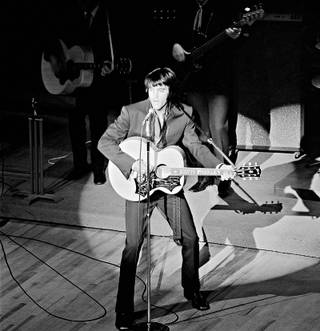
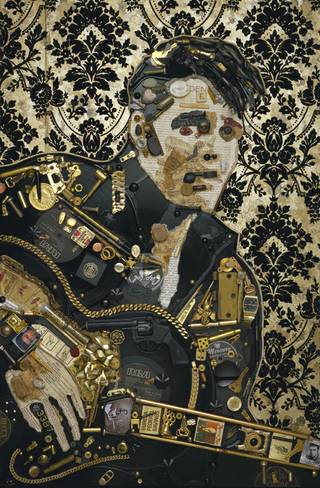
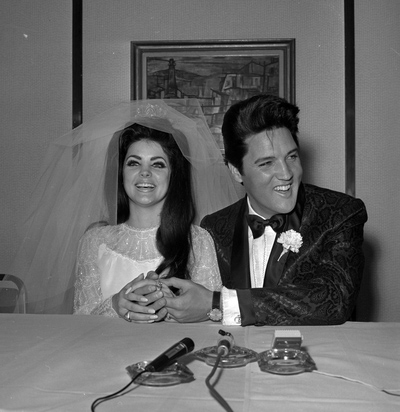

Join the Discussion:
Check this out for a full explanation of our conversion to the LiveFyre commenting system and instructions on how to sign up for an account.
Full comments policy